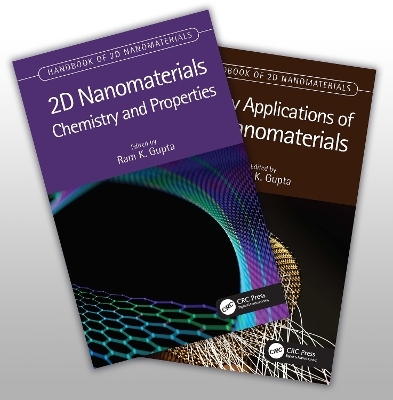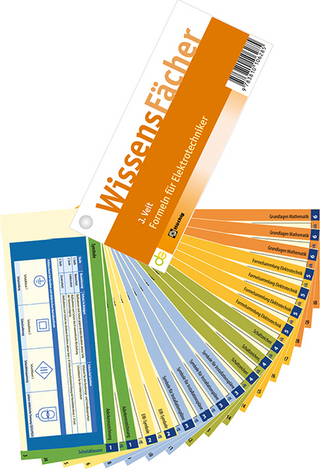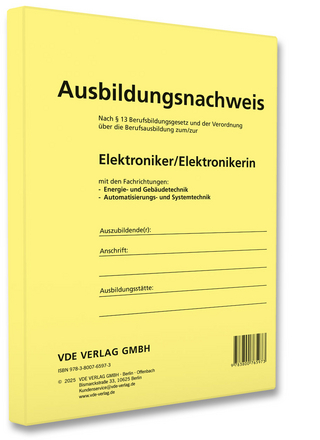
Handbook of 2D Nanomaterials
CRC Press
978-1-032-01378-7 (ISBN)
2D nanomaterials have emerged as promising candidates for energy devices owing to their superior electrochemical properties, surface area, nanodevice integration, multifunctionality, printability, and mechanical flexibility. Handbook of 2D Nanomaterials: Fundamentals and Energy Applications, Two-Volume Set summarizes research for different materials in the 2D category such as graphene and its derivatives, transition metal chalcogenides, transition metal oxides/hydroxides, transition metal carbides/nitrides/carbonitrides, and 2D polymers for energy applications such as in batteries, supercapacitors, solar cells, and fuel cells.
The first volume covers basics concepts, chemistries, and properties along with theoretical consideration in designing new 2D nanomaterials
The second volume covers a wide range of applications of 2D nanomaterials for energy as well as future applications and challenges in fabricating flexible energy generation and storage devices
Presents synthesis, characterization, and applications of 2D materials for green energy production and storage
Explores new aspects of synthesizing 2D nanomaterials beyond traditionally layered structures
Provides detail of novel methods and advanced technologies
These handbooks are aimed at materials scientists, chemists, electrochemists, and engineers working in energy disciplines.
Dr. Ram Gupta is Associate Professor at Pittsburg State University. Dr. Gupta’s research focuses on green energy production and storage using conducting polymers and composites, electrocatalysts for fuel cells, nanomaterials, optoelectronics and photovoltaics devices, organic-inorganic hetero-junctions for sensors, nanomagnetism, bio-based polymers, bio-compatible nanofibers for tissue regeneration, scaffold and antibacterial applications, and biodegradable metallic implants. Dr. Gupta has published over 200 peer-reviewed articles, made over 275 national/international/ regional presentations, chaired many sessions at national/international meetings, wrote several book chapters, and received over $2 million for research and educational activities from external agencies. He serves as associate editor, guest editor, and editorial board member for various journals. Tuan Anh Nguyen completed his BSc in Physics from Hanoi University in 1992, and his Ph.D. in Chemistry from Paris Diderot University (France) in 2003. He was a Visiting Scientist at Seoul National University (South Korea, 2004) and the University of Wollongong (Australia, 2005). He then worked as a Postdoctoral Research Associate & Research Scientist at Montana State University (USA), 2006-2009. In 2012, he was appointed as Head of Microanalysis Department at the Institute for Tropical Technology (Vietnam Academy of Science and Technology). He has managed 4 Ph.D. theses as thesis director and 3 are in progress; He is Editor-In-Chief of "Kenkyu Journal of Nanotechnology & Nanoscience" and Founding Co-Editor-In-Chief of "Current Nanotoxicity & Prevention". He is the author of 4 Vietnamese books and Editor of 32 Elsevier books in the Micro & Nano Technologies Series.
Volume 1 (2D Nanomaterials: Chemistry and Properties):
1. Chemistry of 2D Materials for Energy Applications.
2. Advanced 2D Materials for Energy Applications.
3. Top-Down Synthesis of 2D Nanomaterials.
4. Bottom-Up Synthesis of 2D Nanomaterials for Energy Applications.
5. Types of Energy Devices and Working Principles.
6. Theoretical Considerations of 2D Materials in Energy Applications.
7. 2D Nanomaterials Using Thin Film Deposition Technologies.
8. Wafer-Scale Growth and High-Throughput Characterization of Ultrathin 2D Transition Metal Dichalcogenides (TMDCs) for
Energy Applications.
9. Morphological Aspects of 2D Nanomaterials for Energy Applications.
10. Effect of Exfoliation on Structural and Electrochemical Properties.
11. Tuning of Bandgap and Electronic Properties for Energy Applications.
12. Electrolyte Membrane for 2D Nanomaterials.
13. Nanocomposites of 2D Materials for Enhanced Electrochemical Properties.
14. Recent Developments in Group II-VI Based Chalcogenides and Their Potential Application in Solar Cells.
15. Photovoltaic Application of Graphene Oxide and Reduced Graphene Oxide: Perspectives on Material Characteristics and Device Performance.
16. Revolutionizing the Field of Solar Cells by Utilization of Nanoscale Metal Oxide/Hydroxide Based 2D Materials.
17. 2D Materials for Flexible Photo Detector Applications.
18. 2D Nanomaterials for Electrocatalytic Hydrogen Production.
19. Application of Graphene Family Materials for High-Performance Batteries and Fuel Cells.
20. 2D Transition Metal Dichalcogenides (TMD)-Based Nanomaterials for Lithium/Sodium-Ion Batteries.
Volume 2 (Energy Applications of 2D Nanomaterials):
1. Importance of 2D Nanomaterials for Energy.
2. Graphene-Based 2D Nanomaterials for Fuel Cells.
3. MXene-Based 2D Nanomaterials for Fuel Cells.
4. 2D Nanomaterials in Flexible Fuel Cells.
5. 2D Nanomaterials for Portable and Flexible Fuel Cells.
6. Role of 2D Materials in Organic and Perovskite Photovoltaics.
7. Graphene-Based 2D Nanomaterials for Solar Cells.
8. Chalcogenide-Based 2D Nanomaterials for Solar Cells.
9. Metal Phosphide-Based 2D Nanomaterials for Solar Cells.
10. MXene-Based 2D Nanomaterials for Solar Cells.
11. Nouveau Advancements Achieved in the Performance Enchantment of Solar Cells Modified through MXene-Based 2D Nanomaterials Utilization.
12. Nanocomposites of MXene for Photovoltaic Applications.
13. Graphene-Based Nanomaterials for Battery Applications.
14. Chalcogenide-Based 2D Nanomaterials for Batteries.
15. Metal Phosphide-Based 2D Nanomaterials for Batteries.
16. MXene-Based 2D Nanomaterials for Batteries.
17. Vanadium Dichalcogenides-Based 2D Nanomaterials for Batteries.
18. Emerging Applications of 2D Nanomaterials for Flexible Batteries (FBs).
19. Nanocomposites of 2D Materials for Flexible Li-Ion Batteries.
20. Graphene-Based 2D Nanomaterials for Supercapacitors.
21. MXene-Based 2D Nanomaterials for Supercapacitors.
22. 2D Nanomaterials for Flexible Supercapacitors.
| Erscheint lt. Verlag | 10.6.2022 |
|---|---|
| Zusatzinfo | 14 Tables, black and white; 134 Line drawings, black and white; 69 Halftones, black and white; 203 Illustrations, black and white |
| Verlagsort | London |
| Sprache | englisch |
| Maße | 156 x 234 mm |
| Gewicht | 1760 g |
| Themenwelt | Technik ► Elektrotechnik / Energietechnik |
| Technik ► Maschinenbau | |
| Technik ► Umwelttechnik / Biotechnologie | |
| ISBN-10 | 1-032-01378-8 / 1032013788 |
| ISBN-13 | 978-1-032-01378-7 / 9781032013787 |
| Zustand | Neuware |
| Informationen gemäß Produktsicherheitsverordnung (GPSR) | |
| Haben Sie eine Frage zum Produkt? |
aus dem Bereich


